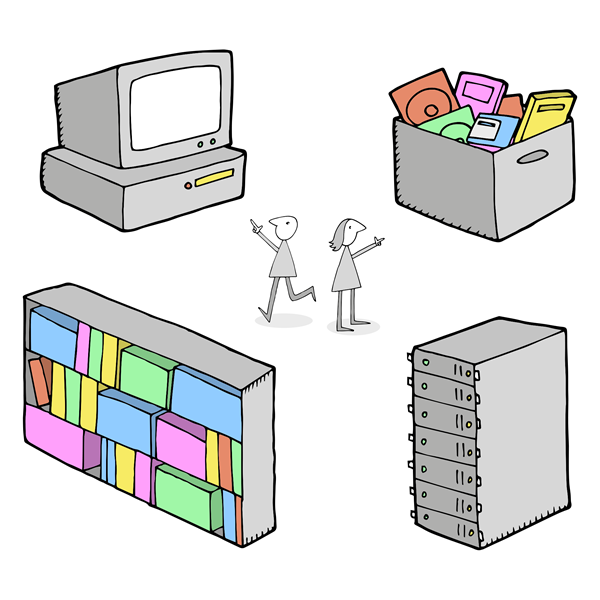Over the last month I've been working with the Open Planets Foundation, as part of the SCAPE Project, to develop some guidance materials to help practitioners understand and leverage the business context to some exciting new SCAPE technologies. The SCAPE Business Case Templates provide detailed guidance on building a business case focused on the application of SCAPE tools. It's all about understanding, applying and selling relevant benefits, costs and risks.
Each template introduces one of the three SCAPE technologies before exploring the business context and the case for putting them into action. The templates cover:
- One of the focused preservation tools developed by SCAPE: Jpylyzer
- The scalable architecture and toolset developed by SCAPE to address the preservation processing of large datasets: The SCAPE Platform
- The assessment and decision making tools and approaches developed by SCAPE: The Planning and Watch Suite
A core part of each of the templates is a set of concise business benefits of relevance to each technology. A business case is of course all about that cost/benefit ratio so the detailed benefits are accompanied by notes on costs and risks. This information provides many of the raw materials needed in a business case, but they need to be adapted and applied carefully so that they align with organisational objectives, use appropriate language for the target audience and sell aspects of the work specific to the case in question. Each template therefore includes a business case example illustrating how benefits can be applied to build a strong business case in a specific context.
 The templates can be viewed as a stand alone deliverable from SCAPE, but they've also been carefully integrated with an existing resource: the Digital Preservation Business Case Toolkit (DPBCT). This provides users of the SCAPE work with lots of useful background guidance and examples. It also ensures that these SCAPE results are able to live on, post project, as part of a toolkit under the stewardship of the Digital Preservation Coalition. As I said, the Templates can be viewed as standalone guides, but elements of the text are also embedded (using Mediawiki transclusion) in relevant sections of the DPBCT. This makes for a mutually beneficial collaboration with enhancement for DPBCT while still delivering detailed business case examples focused on SCAPE tech. I'm very keen of project work that builds on, extends or otherwise enhances existing resources rather than reinventing the wheel and then dying out at project end, and I think we've managed to pull that off here.
The templates can be viewed as a stand alone deliverable from SCAPE, but they've also been carefully integrated with an existing resource: the Digital Preservation Business Case Toolkit (DPBCT). This provides users of the SCAPE work with lots of useful background guidance and examples. It also ensures that these SCAPE results are able to live on, post project, as part of a toolkit under the stewardship of the Digital Preservation Coalition. As I said, the Templates can be viewed as standalone guides, but elements of the text are also embedded (using Mediawiki transclusion) in relevant sections of the DPBCT. This makes for a mutually beneficial collaboration with enhancement for DPBCT while still delivering detailed business case examples focused on SCAPE tech. I'm very keen of project work that builds on, extends or otherwise enhances existing resources rather than reinventing the wheel and then dying out at project end, and I think we've managed to pull that off here.
Paul Wheatley, Paul Wheatley Consulting Limited

